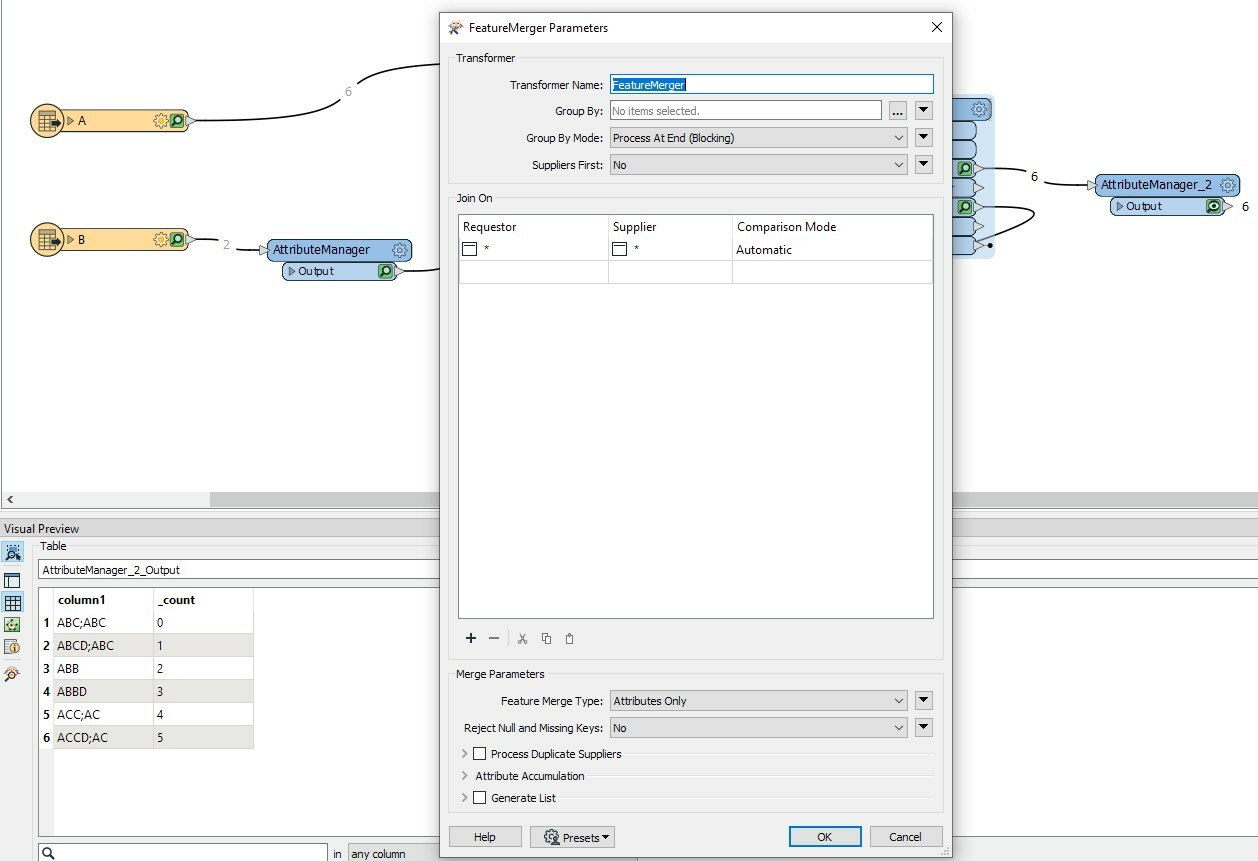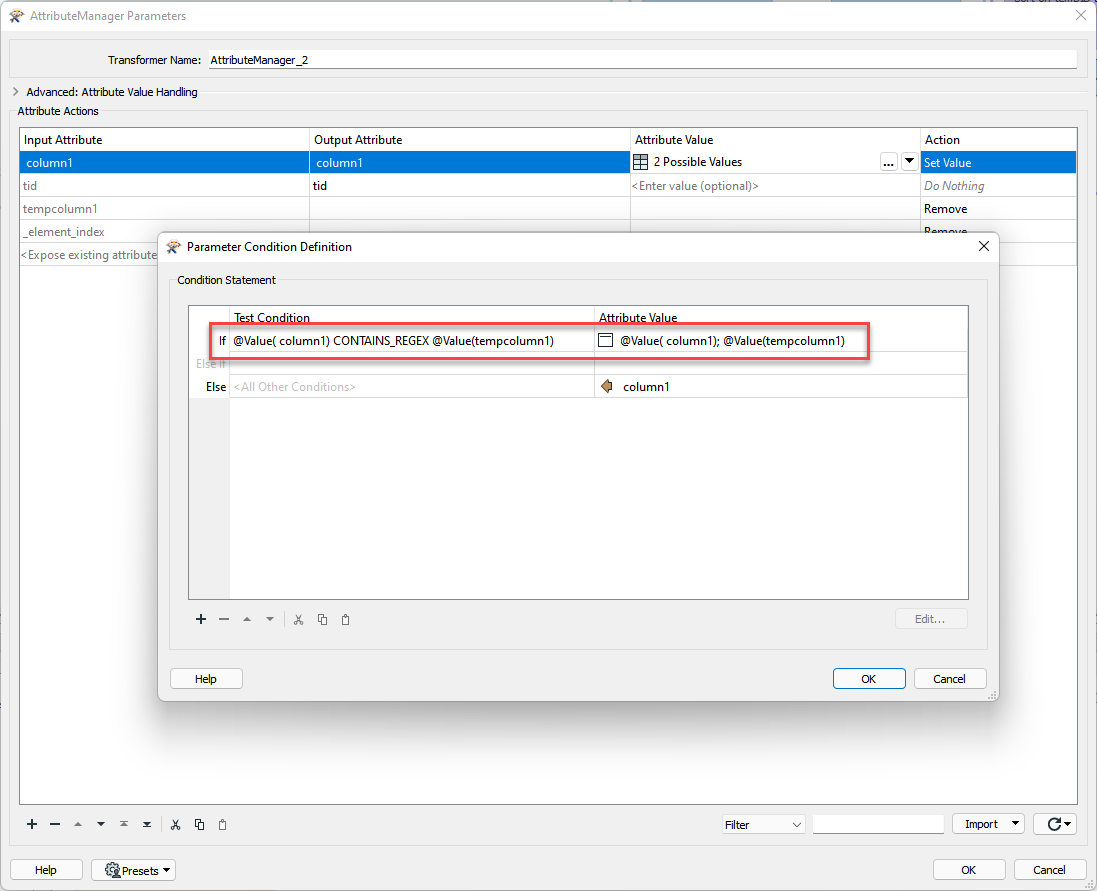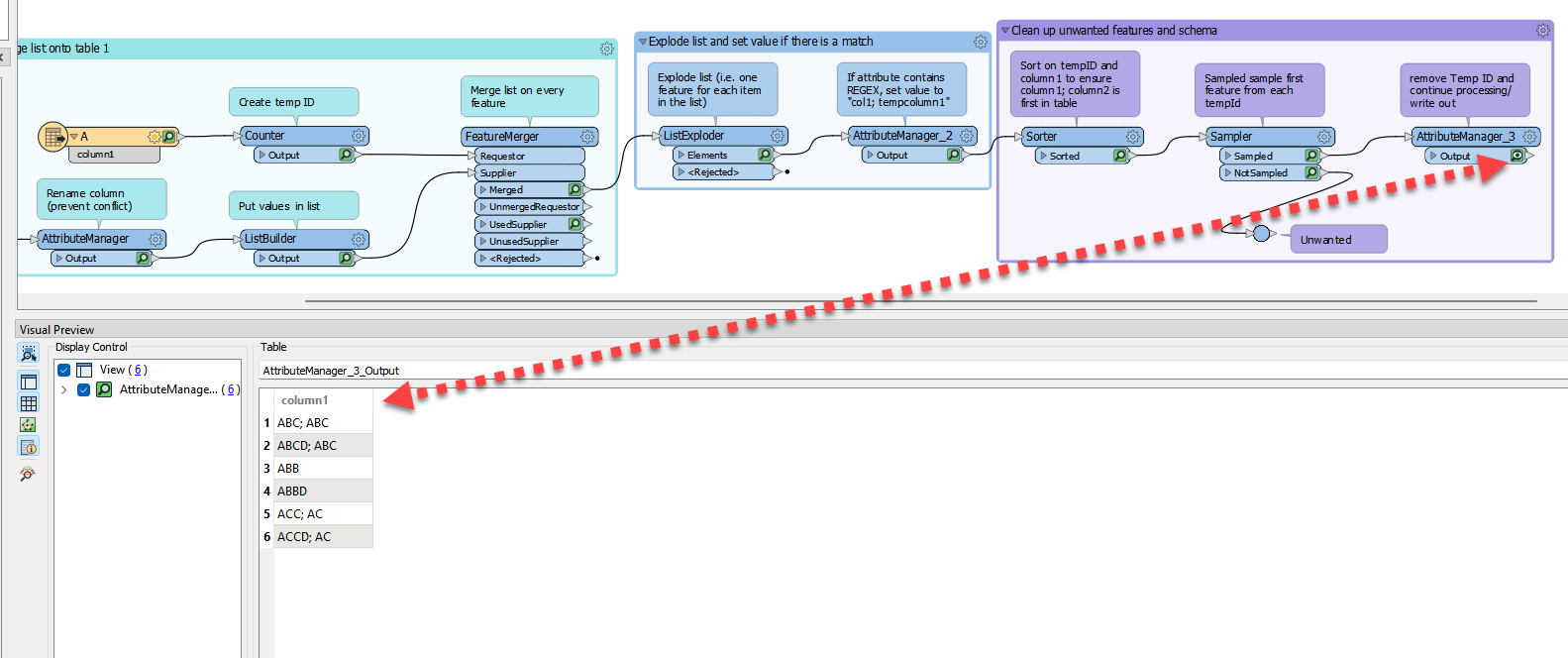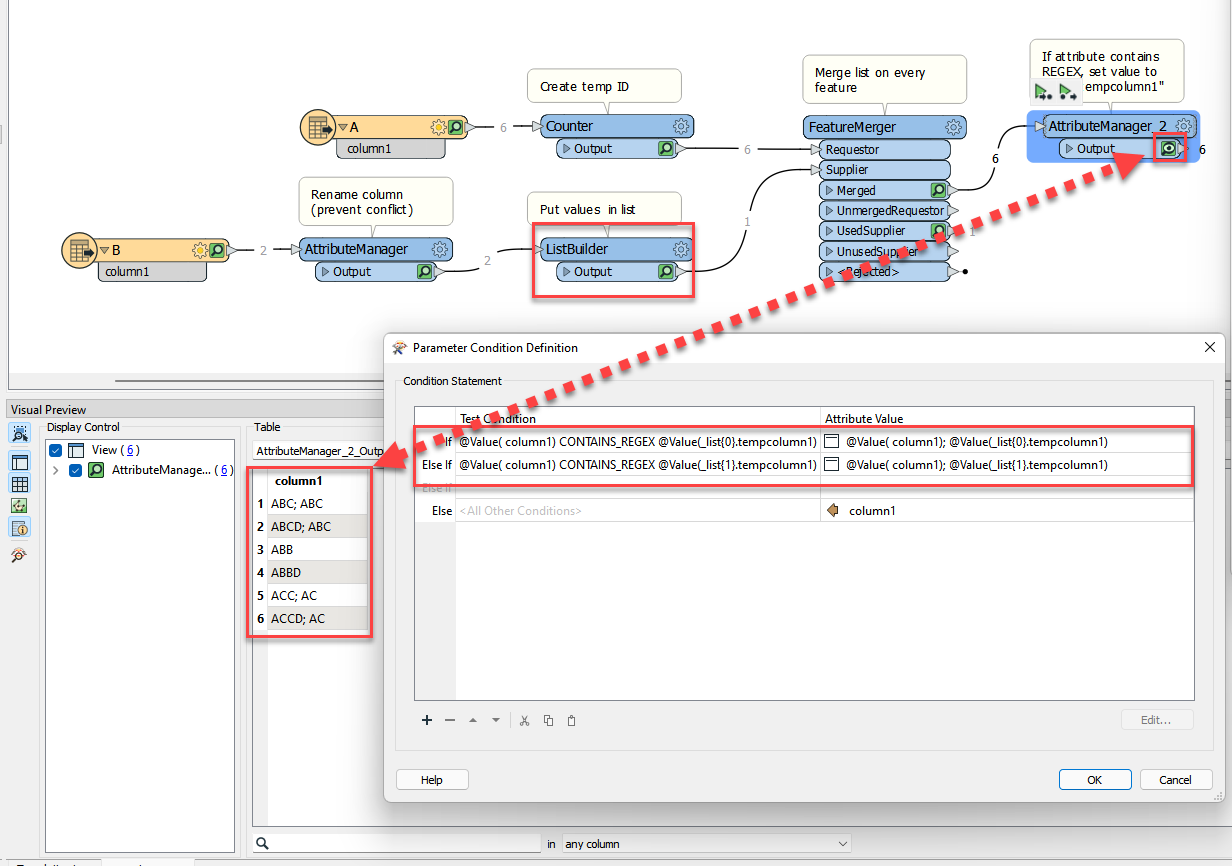Hello!
Thank you very much for your help!
I think I understand the general idea of your suggestion. If I understood it correctly than by examining your conditional testing (where you are explicitly testing against first and second element from the list) I presume this will work only if I have two strings in second table? Am I right? The fact is that I can have many strings in both tables.
The practical use of this would be for example: I have list of all street names of the country in first table and I want to find all the streets named by some plant (like oakstreet, applestreet, street of flowers,...) so I compare the list of streets with list of all/many plant names from plant dictionary.
Another thing is that I couldn't make it work even with this two strings. I understand the beginning and the end, but couldn't merge list on every feature. How to do that? Can you please put the screenshot of featuremerger settings? How should I join the requestor and supplier?
EDIT: after several trials and errors I came up with this setting of feature merger and was able to get the result - but I'm not sure if that is the proper use of featuremerger...









 As a result, if there is a match, the attribute value is set accordingly.
As a result, if there is a match, the attribute value is set accordingly.  You could also do this without exploding the list, but then you have to set a new condition for each element in the list:
You could also do this without exploding the list, but then you have to set a new condition for each element in the list:  I've uploaded both workspaces in case you wanted to see the different methods. You can get a general idea of what's going on from the annotations and by inspecting each feature cache to see how the data changes.
I've uploaded both workspaces in case you wanted to see the different methods. You can get a general idea of what's going on from the annotations and by inspecting each feature cache to see how the data changes.